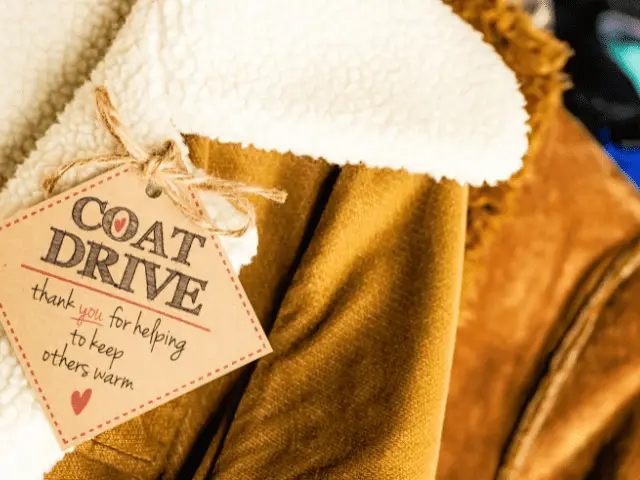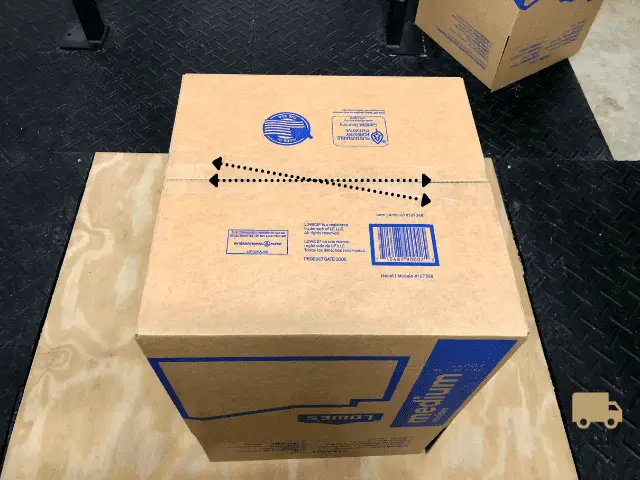Compared to other pieces of clothing, winter coats are perhaps the toughest to pack. They’re bulky, difficult to fold, and require a lot of space. Plus, they’re heavy! You’ll need a good quality box if you don’t want those expensive winter coats tumbling out of the box amidst your move.
To help streamline the process, we’ll show you how to pack winter coats for moving in six easy-to-follow steps. So grab your packing tape and let’s get straight into it!
This article contains affiliate links. If you buy something using these links I may earn a commission. Thanks!
Table of Contents
Packing Materials Need
- Packing tape
- Plastic bag or garment bag
- Packing box (medium to large)
- Vacuum sealer (optional)
- Permanent marker
Step 1: Sort the Winter Coats by Importance

Before packing your winter coats, sort them from least used to most used to help you with the packing order. Take this opportunity to donate or sell coats you no longer use to save up some packing space.
Check the coat pockets for ink pens, gum, chocolate, and any other item that might ruin the coat if left in the box for extended periods of time.
If you have the time, wash the coats you’re looking to pack. This way, you can wear the coats immediately after the move.
Step 2: Fold the Clothes
Place the winter coats on a flat, clean surface and start folding.
First, button or zip the coat to ensure it remains as crease-free as possible. This will make the rest of the folding process easier.
Fold the coat’s sleeves across the front of the coat to make a rectangle, making sure they don’t overlap. Then, fold it in the middle and roll it up. Make sure the edges are tucked in and straight. The tighter you roll, the more space you’ll save in the moving box or suitcase.
Finally, secure the rolled-up jacket with high-quality rubber bands or hair ties so it won’t unravel.
Step 3: Place the Coats in a Plastic Bag
Once the coats are neatly folded, place them in a clean plastic bag to prevent dust, dirt, and other unwanted contaminants from getting in. You can also use packing cubes but make sure they’re big enough to fit the coats. Pack in as many of the coats as possible and zip them up.
but make sure they’re big enough to fit the coats. Pack in as many of the coats as possible and zip them up.
If you’ve got a lot of bulky coats to pack, get several vacuum seal bags and a vacuum sealer. The vacuum sealer can remove the extra air found between the coat’s fibers, helping you save a ton of space. It’ll compress the coat by at least 50% of its original size.
If you don’t have a vacuum sealer, you can use a regular vacuum and put it in reverse. Just make sure it’s cleaned beforehand so dust and dirt don’t enter the bag.
Step 4: Organize the Coats in the Moving Box, Suitcase, or Duffel Bag
You’re almost done! Take the coats you’ve wrapped and place them in the moving box, suitcase, or duffel bag in order of size.
Place the biggest and bulkiest coats at the bottom and the smallest at the top.
Also, make sure to organize them by importance so you have easy access to the coats you frequently use.
There’s also a fourth option here as well. If you used a wardrobe box for things like your dress shirts and you have some extra room, this is the perfect spot to slide in a couple of your winter coats.
Step 5: Seal the Box

This step only applies if you’re using a moving box to pack up your winter coats.
Using high-quality packing tape, seal the bottom and the top of the box.
Most people end up using way too much tape to seal their boxes. The best way to tape a moving box is with two strips of packing tape. One across the seam and another running diagonally across the seam.
Yes, you can tape the outer seams as well to make an “H”, but that’s most likely not necessary. I’ve found with quality tape and boxes a single strip of tape can hold well over 100 pounds.
Step 6: Label the Box
Label the box with a permanent marker. Write something simple and straightforward, like “Winter Coats.” This will help you and the movers identify the contents of the box.
Tips to Follow When Packing Winter Coats (And Other Winter Clothes)
To ensure you’re packing your winter clothes correctly, follow these tips:
- If you’re moving in winter, set aside some winter coats to use during and after the move. Place them near the top of the box or in a separate box with other just-in-case winter items.
- Separate each coat by ownership so you won’t have to segregate the items once you’ve moved. Label the box according to the owner.
- For expensive coats, don’t roll them up lest you wrinkle them. Instead, place them in a garment bag
 and fold them in half once.
and fold them in half once. - Winter coats are heavy, so make sure you’re using a high-quality packing box so it doesn’t burst open during the move.
- Don’t leave any empty space in the box. Fill in the gaps with towels, clothing, or packing paper so the box doesn’t feel loosely packed or unbalanced.
- Don’t pack perishables, food, scented items, and spillable items like creams, serums, and perfume with the winter coats.
Final Thoughts
There you have it; our guide on how to pack winter coats for moving!
Packing winter coats aren’t as easy as packing other types of clothes, but it’s manageable with the right packing technique.
The rule of thumb here is to roll, don’t fold. Rolling your winter clothes significantly reduces their size and frees up extra space in the moving box, suitcase, or duffel bag. However, use caution! Not all winter coats should be rolled. Some need to be placed flat in the bottom of the box to prevent them from wrinkling.
If you enjoyed this guide, you may also want to check out some of our other guides like How To Pack Your Closet for a Move and How To Pack Your Necklaces. We’ve moved over a dozen times across 7 different states and share lots of tips we’ve picked up along the way!

